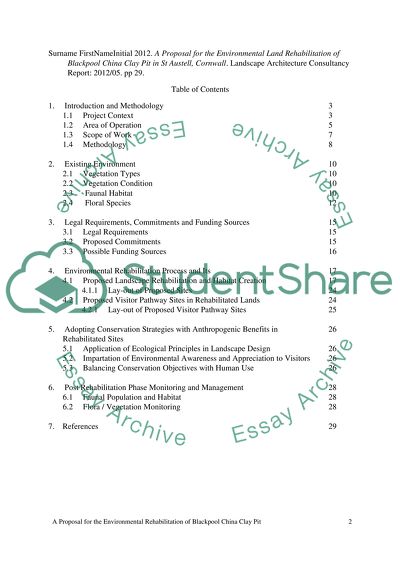Cite this document
(“Landscape Rehabilitation - China Clay Essay Example | Topics and Well Written Essays - 4000 words”, n.d.)
Retrieved from https://studentshare.org/environmental-studies/1397683-landscape-rehabilitation-china-clay
Retrieved from https://studentshare.org/environmental-studies/1397683-landscape-rehabilitation-china-clay
(Landscape Rehabilitation - China Clay Essay Example | Topics and Well Written Essays - 4000 Words)
https://studentshare.org/environmental-studies/1397683-landscape-rehabilitation-china-clay.
https://studentshare.org/environmental-studies/1397683-landscape-rehabilitation-china-clay.
“Landscape Rehabilitation - China Clay Essay Example | Topics and Well Written Essays - 4000 Words”, n.d. https://studentshare.org/environmental-studies/1397683-landscape-rehabilitation-china-clay.


